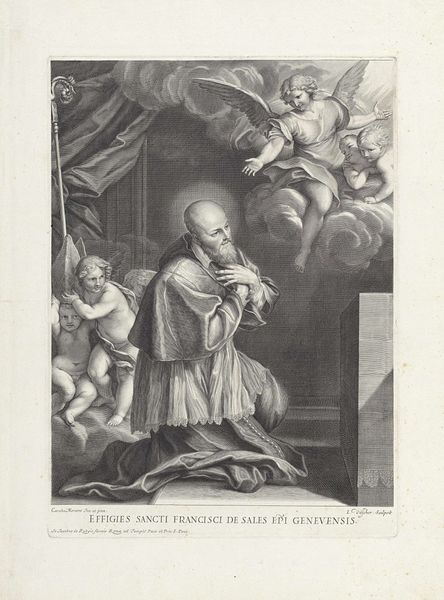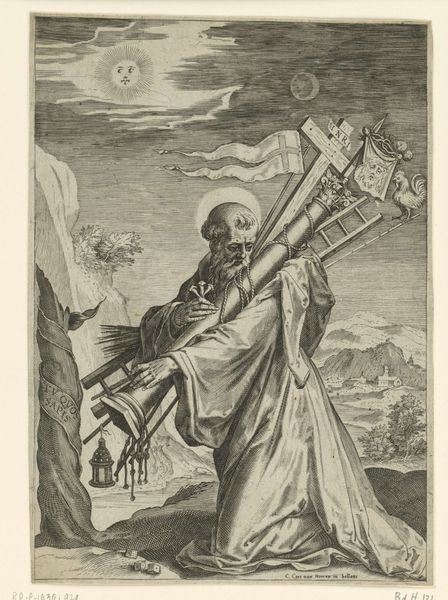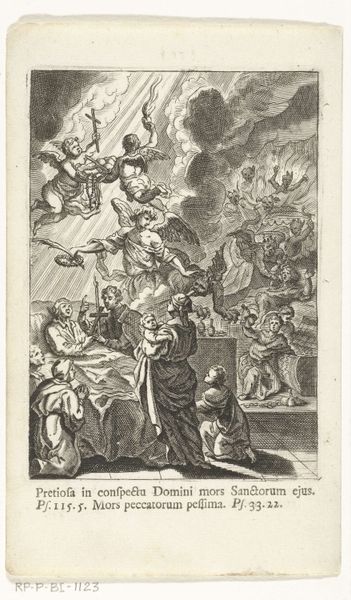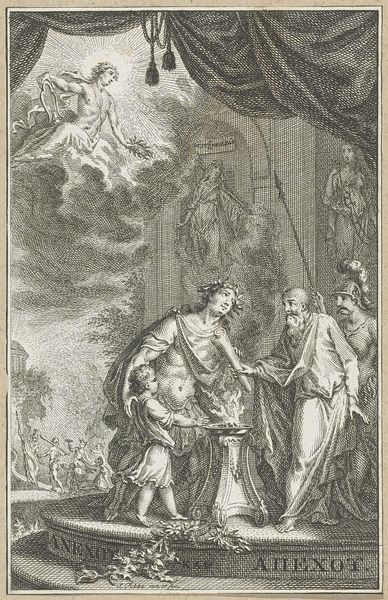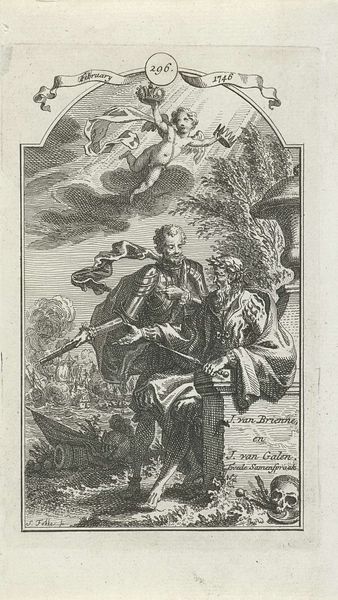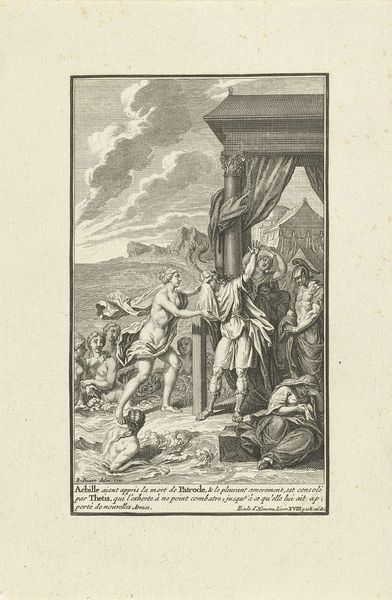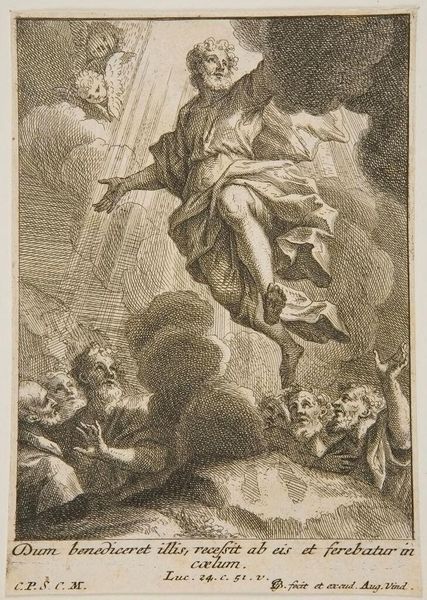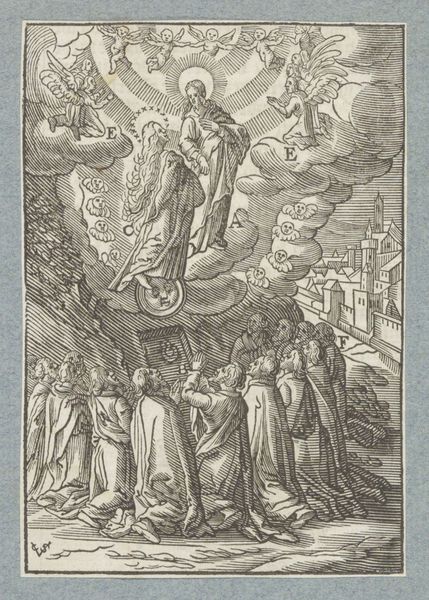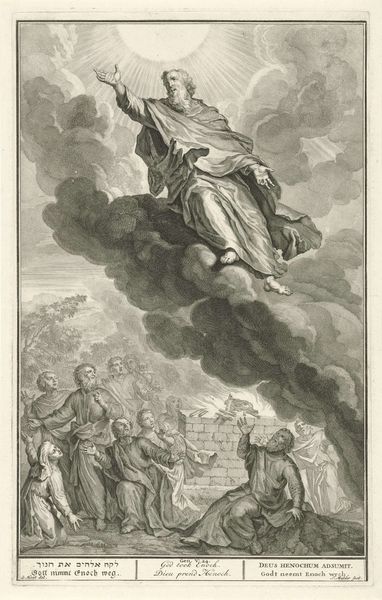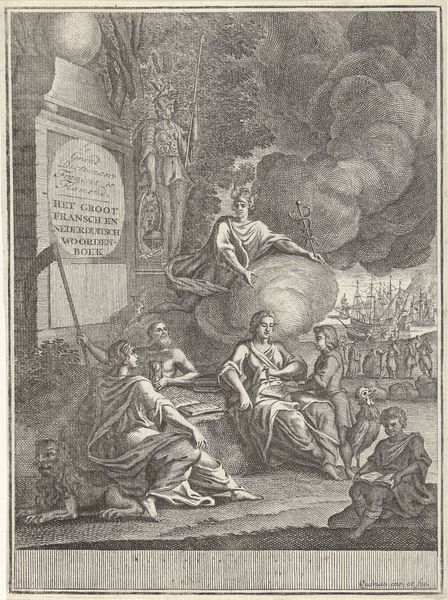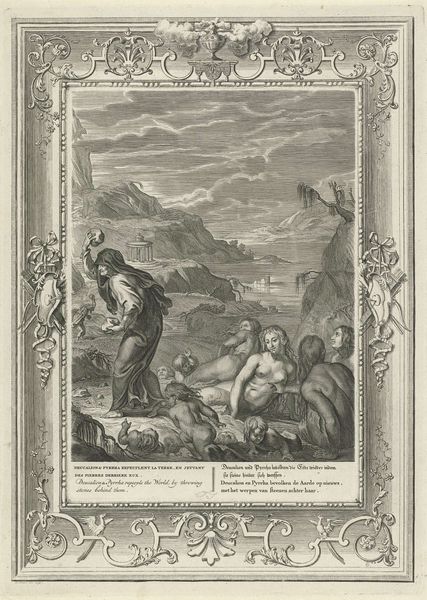
engraving
#
baroque
#
figuration
#
line
#
history-painting
#
engraving
Dimensions: height 155 mm, width 131 mm
Copyright: Rijks Museum: Open Domain
Editor: We're looking at "Hippolyte Galantin before a Crucifix," an engraving by Stefano della Bella, dating sometime between 1620 and 1664. It's quite detailed, almost ethereal, in its rendering. How do you interpret this work from a formal perspective? Curator: Observe the composition: a distinct division between the earthly and the divine, reinforced by contrasting horizontal and vertical lines. The kneeling figure of Galantin occupies the lower right, grounded by strong diagonal lines, while the ethereal realm, rendered with lighter lines, occupies the upper left. What effect do you think this division creates? Editor: It emphasizes the separation, yet the rays of light bridge that divide, creating a visual connection. There's a stark contrast in the texture as well. Curator: Precisely. The linear precision defining Galantin’s figure sharply contrasts with the swirling clouds and angelic forms. Della Bella employs line as a means of structuring not just form, but also symbolic weight. The cross, centrally placed in the upper-left quadrant, acts as the focal point for the lines of perspective. Do you agree that the artist utilizes the Baroque style in this artwork? Editor: The dramatic lighting and emotional intensity certainly lean into Baroque sensibilities. The line work seems precise, almost scientific. What purpose would line art have at that time? Curator: Well, printmaking allowed widespread dissemination of images; line art further facilitated this and was cheap, allowing commoners to experience art. We have Galantin kneeling on a very geometrical platform looking toward angels rendered with curving lines. Note that the lower realm is structured and ordered, the heaven seems infinite and nebulous. Ultimately, Galantin is a blur between these worlds through which we may interpret meaning. What meaning you extract is entirely up to you. Editor: I see, the piece functions as a structured visual argument. I appreciate the analysis and exploration of its construction.
Comments
No comments
Be the first to comment and join the conversation on the ultimate creative platform.
